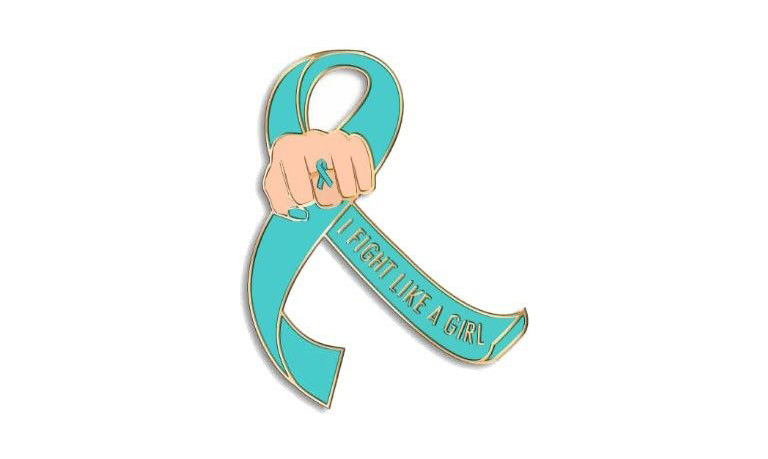Parade the Pink—Teal Aware
October is breast cancer awareness month. A parade of pink: sportswear, jewelry, ribbons, marathons, lights. So why am I sporting teal? Researchers have discovered a link between breast cancer and ovarian cancer. Two genetic mutations, BRCA1 and BRCA2 have been associated with an increased risk for breast cancer. But did you also know that these mutations could increase your risk for ovarian cancer by as much as 46%?
I am an ovarian cancer survivor.
Ovarian cancer—it launches in silence, creeps with a whisper and advances with a roar.
It hid in the recesses of my belly. Under cover of darkness, the cancer cells multiplied until a grapefruit-size mass emerged. When I pressed on the growth, stabbing pain gripped my abdomen. I hope this is just a uterine fibroid.
I thought I knew the symptoms of ovarian cancer. But despite my background in oncology nursing, I had missed one—nausea. Over the course of a few months, I had experienced several episodes of nausea, mistaking them for the flu. Fleeting thoughts of ovarian cancer crept into my mind, but I brushed them away. I rationalized. This nausea is just too infrequent to be cancer.
My doctor agreed that a fibroid was the most probable diagnosis, but we needed to schedule an ultrasound. In the darkened room, the ultrasound technician slid the probe around my abdomen. With a furrowed brow, she shot me a glance. I knew something was wrong. After the scan, I tucked the films under my arm and slipped into my doctor’s office. She examined the images, spun around and delivered her verdict—ovarian cancer, the size of a cantaloupe. She rattled off the tests and surgery that still needed to be scheduled. Words spilled over her lips, but the syllables sounded foreign and distant. Is she talking to me?
God’s grace brought me through the ravages of surgery and chemotherapy: baldness, crushing chest pain, nausea and brain fog. Fatigue siphoned my strength.
There are no screening tests for ovarian cancer. Early diagnosis greatly improves a woman’s chances of survival. But the vague symptoms often mimic gastrointestinal disorders that can be easily ignored or misdiagnosed. Many women are diagnosed in the latter stages—therefore ovarian cancer has been identified as the woman’s cancer with the lowest survival rate.
The most common symptoms of ovarian cancer include:
- Persistent bloating with an increase in the size of the abdomen
- Pelvic or abdominal pain
- Feeling full quickly after eating
- Urinary urgency or frequency
This October, let us not just parade the pink for breast cancer awareness, but let us be teal aware.

